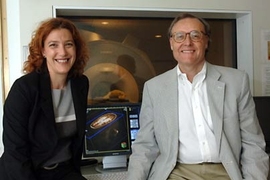MIT neuroscientists exploring how memory formation differs between children and adults have found that although the two groups have much in common, maturity brings richer memories.
In the August 5 advance online edition of Nature Neuroscience, the MIT team reports that children rival adults in forming basic memories, but adults do better at remembering the rich, contextual details of that information. The MIT study provides new insights into how children learn that are not only theoretically important, but could also inform practical learning in everyday settings.
The ability to remember factual information - who, what, where, when - emerges gradually during childhood, and plays a critical role in education. The brain systems underlying it have been extensively studied in adults, but until now little was known about how they mature during child development.
The MIT study indicates that a more developed prefrontal cortex (PFC) - an area of the brain long associated with higher-order thinking, planning, and reasoning -- may be responsible for creating richer memories in adults.
"Activation in the PFC follows an upward slope with age in contextual memories. The older the subjects, the more powerful the activation in that area," explains senior author John Gabrieli of MIT's McGovern Institute for Brain Research, Department of Brain and Cognitive Sciences, and Harvard-MIT Division of Health Sciences and Technology.
"That makes sense, because there's been a convergence of evidence that the PFC develops later than other brain regions, both functionally and structurally.... But this is the first study that asks how this area matures and contributes to learning."
For the study, Noa Ofen, a postdoctoral associate in Gabrieli's lab, forewarned 49 healthy volunteers ranging in age from eight to 24 that they would be tested on their recognition of 250 common scenes, such as a kitchen, shown to them as they lay in a functional magnetic resonance imaging scanner. She recorded their brain responses as the volunteers tried to commit each picture to memory. Shortly after the volunteers left the scanner, she showed them twice as many scenes. Had they seen each one before, and if so, how vividly did they recall the scene?
Ofen then went back to the brain activation patterns. In both children and adults, several areas in the PFC and the medial temporal lobe (MTL) showed higher activation at the time when subjects studied a scene they would later remember. No age-related differences showed up in the activation patterns of the MTL regions in children and adults, but differences did appear in the PFC when looking at pictures that were later correctly recognized.
Those age-related differences related to the quality of the volunteers' memories. The older the volunteers, the more frequently their correct answers were enriched with contextual detail. Going back to the brain scans, Ofen found that the enriched memories also correlated with more intense activation in a specific region of the PFC.
"We found no change with age for memories without context," Ofen explains. "All the maturation is in memories with context. Our findings suggest that as we mature, we are able to create more contextually rich memories, and that ability evolves with a more mature PFC."
Susan Whitefield-Gabrieli, a research associate at MIT's McGovern Institute, contributed to this research, in addition to scientists from Harvard University, New York University, and the University of California, Berkeley.
"This study takes an important step forward in our understanding of the neural basis of memory development," comments Daniel Schacter, an expert on memory at Harvard University who was not associated with the study.
The study was funded by the National Institute of Mental Health.








